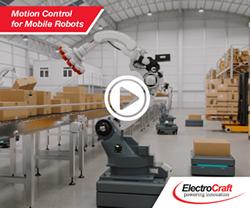Ford invests $1B in robotics startup in driverless car quest
Raspberry Pi-powered arm: This kit aims to make robotics simple enough for kids
Inside Amazon's robot-run supermarket that needs just 3 human workers
Robotics-focused ETFs see big gains, Trump could hasten trend
Watch a new robot fly just like a bat
MIT Builds Invisible Fish Grabbing Robot
A robotic barista is now serving - really fast
Microbots: Microsoft's multi-pronged robotics play takes shape
Swarm of Underwater Robots Mimics Ocean Life
Robotics, artificial intelligence, and 5G are at the heart of Theresa May's new industrial strategy
Segway's 'mobility robot platform' to begin mass production
Artificial fingertip that 'feels' wins international robotics competition
CTRL The Robot. A modern industrial robot for the desktop.
Robotics, Trump and Brexit turn up the heat amid the snow of Davos
Robots: Legal Affairs Committee calls for EU-wide rules
Records 586 to 600 of 771
First | Previous | Next | Last
Mobile Robots - Featured Product

